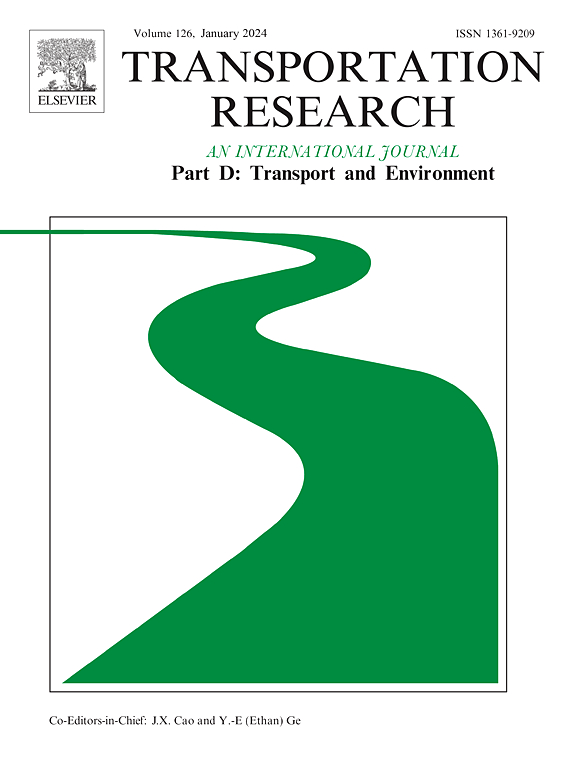The impacts of port truck traffic’s temporal patterns on emissions
IF 7.7
1区 工程技术
Q1 ENVIRONMENTAL STUDIES
Transportation Research Part D-transport and Environment
Pub Date : 2025-07-21
DOI:10.1016/j.trd.2025.104918
引用次数: 0
Abstract
This paper quantifies the emissions impacts of changes in temporal patterns of truck traffic arriving at a major marine port. Using proprietary computational tools to process GPS data from over 50,000 freight vehicles operating in the New York City metropolitan area, we estimate fuel consumption, emissions, and generalized transportation costs for different scenarios of temporal patterns. The results show that changes in arrival times can significantly reduce emissions. For instance, operating the port 24/7 could cut CO2 emissions by 19 %, while a more modest three-hour shift in port hours could achieve a 7.5 % reduction. The results also show a reduction in transportation costs. These findings provide empirical evidence of the effectiveness of freight demand management initiatives that induce changes in the temporal patterns of truck traffic at freight facilities.
港口货车交通时空格局对排放的影响
本文量化了到达主要海洋港口的卡车交通的时间模式变化对排放的影响。使用专有的计算工具来处理来自纽约市大都会地区运营的50,000多辆货运车辆的GPS数据,我们估计了不同时间模式情景下的燃料消耗、排放和广义运输成本。结果表明,改变到达时间可以显著减少排放。例如,24小时运营港口可以减少19%的二氧化碳排放,而更适度的三小时轮班可以减少7.5%的排放量。研究结果还显示,运输成本有所降低。这些发现为货运需求管理举措的有效性提供了经验证据,这些举措导致货运设施卡车交通的时间模式发生变化。
本文章由计算机程序翻译,如有差异,请以英文原文为准。
求助全文
约1分钟内获得全文
求助全文
来源期刊
CiteScore
14.40
自引率
9.20%
发文量
314
审稿时长
39 days
期刊介绍:
Transportation Research Part D: Transport and Environment focuses on original research exploring the environmental impacts of transportation, policy responses to these impacts, and their implications for transportation system design, planning, and management. The journal comprehensively covers the interaction between transportation and the environment, ranging from local effects on specific geographical areas to global implications such as natural resource depletion and atmospheric pollution.
We welcome research papers across all transportation modes, including maritime, air, and land transportation, assessing their environmental impacts broadly. Papers addressing both mobile aspects and transportation infrastructure are considered. The journal prioritizes empirical findings and policy responses of regulatory, planning, technical, or fiscal nature. Articles are policy-driven, accessible, and applicable to readers from diverse disciplines, emphasizing relevance and practicality. We encourage interdisciplinary submissions and welcome contributions from economically developing and advanced countries alike, reflecting our international orientation.

 求助内容:
求助内容: 应助结果提醒方式:
应助结果提醒方式:


